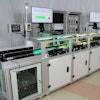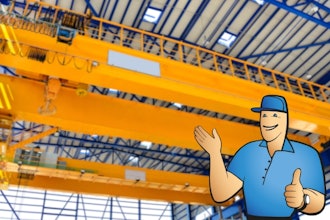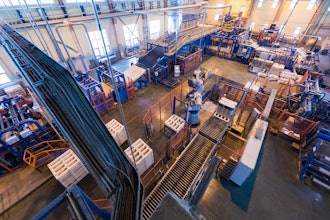
MRO purchases are those necessary to keep the business running. They are used in production and plant maintenance and can include spare parts, components and any consumables used in the production process. The purchases are essential for replacing broken machines, as well as conducting general repair on the factory floor. Sounds pretty important, right?
Despite this, MRO is often overlooked. When looking to reduce costs, some manufacturers choose to buy MRO spares, such as motors, servo drives and robots, based solely on lowest initial purchase price — only to discover extortionate maintenance costs throughout the product’s lifecycle.
When you consider maintenance and operation costs far outweigh any initial savings overtime, it is clear this isn't the right approach.
However, the tide is turning. As factories become smarter, so too has maintenance. Manufacturers are moving towards a more technological approach to maintenance, using data from advanced sensors and artificial intelligence (AI) software — as opposed to the ad-hoc approach of the past.
Rather than taking the traditional approach to maintenance, waiting for equipment to fail before carrying out the relevant repair tasks, businesses are now looking ahead and using technology to avoid unplanned stoppages before they occur.
The increasing number of sensors in manufacturing facilities means that maintenance is now performed with data insight. Using data from sensors on the factory floor, maintenance engineers can visualize production data and gain actionable insights from it.
Some intelligent software is delivered with predictive analytics and maintenance capabilities built-in. This feature automatically identifies equipment which is showing signs of wear and, based on historical data, can intelligently predict when a breakdown is likely to occur. This enables manufacturers to tackle any equipment problems before it causes downtime.
Condition monitoring is another approach. This equipment uses techniques such as vibration analysis and infrared imaging, allowing the maintenance engineer to take preventative action on subtle detections of misalignment, mechanical looseness and motor problems.
A proactive maintenance schedule, using a mixture of these techniques, allows for uncomplicated obsolescence management. Preparing for obsolescence correctly can save companies from resorting to unnecessary and costly system upgrades when spares go wrong.
It's time for more businesses to prioritize MRO, as opposed to sweeping it under the carpet. Manufacturers must focus less on upfront savings, and more on long-term maintenance. An integral part of this process is to forge relationships with reliable automation spares suppliers. After all, knowing who to call when a part breaks down could be the difference between a day of downtime, or a week.
Jonathan Wilkins is the marketing director at obsolete parts supplier, EU Automation.























